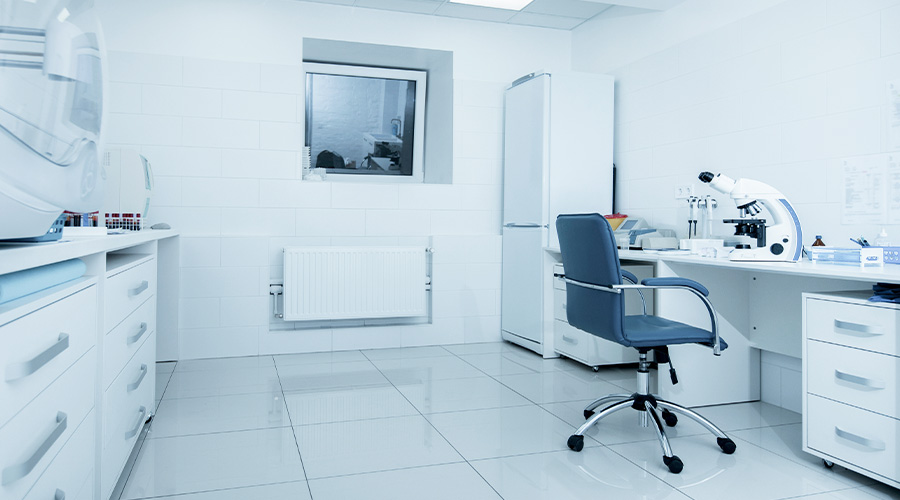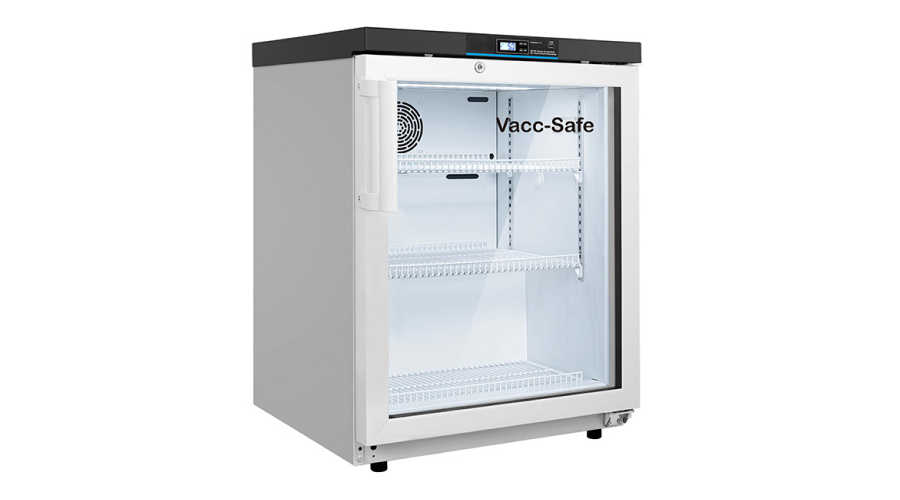Correct placement of medical fridges is essential to ensure the contents are kept at the required temperature between +2°C to +8° C. Medical refrigeration must operate within the Australian compliance standards to ensure medications, vaccines and biological samples are kept cold and free from contamination. Medical fridges must be placed in an area that protects them from the sunlight, avoids temperature fluctuations, and has appropriate ventilation. Read on to discover where to place medical fridges and how to position your medical fridge properly.
Importance of Proper Placement of Medical Grade Fridges
Medical grade fridges are purpose built and designed fridges that have strict temperature settings for temperature sensitive medications, vaccines, and biological samples. A medical fridge can be a countertop, under bench or freestanding, and each needs to be positioned properly to ensure the safekeeping of stock.
If a medical fridge is placed on an unstable surface, it may result in the door staying open, which would cause temperature issues. If a fridge is placed in direct sunlight or near a heat source like a hot water service or warm external wall, the ambient room temperature may become too high which will make the refrigerator work harder. In a similar way, a fridge without enough clearance at the sides, back or top, will not be well ventilated and build up heat. Most fridges require at least 10 cm around the sides, back and top for adequate ventilation.
Finally, medical fridges store crucial medications, vaccinations, and other temperature-sensitive supplies that should only be accessible to health professionals. When choosing the correct location for a medical fridge, make sure it is placed in a secure area that is only accessible by authorised staff.
How To Position a Medical Fridge
Follow these 10 steps to make sure your medical fridge is positioned properly for optimum performance and longevity.
- Store in a room below maximum ambient temperature. A high ambient temperature may have a negative impact on the temperature inside the medical fridge, affecting vaccine storage efficiency. Ideally, the ambient temperature in a laboratory, pharmacy, or healthcare facility needs to be between 15ºC and 25ºC for safe storage. If the room is subjected to extreme temperature variations, it is advisable to install insulation for temperature regularity. Keeping track of the ambient temperature is essential, using thermometers, data loggers and manual monitoring equipment.
- Install on a stable, even surface. A medical fridge that is unbalanced can result in poor distribution of cool air inside the compartment, leading to uneven temperature distribution. Some areas may be too hot and some too cold causing contents to spoil. An unstable surface may also cause the doors to stay open which will cause temperature fluctuations and inaccurate temperature readings. If the ground is not stable enough, it may cause the medical fridge to fall over and be damaged.
- Keep out of direct sunlight. If a medical fridge is continuously exposed to direct sunlight, the fridge casing could overheat, raising the internal temperature of the fridge, potentially resulting in a cold chain breach. Medications and biological samples need specific temperature uniformity for safekeeping. Any change in temperature can cause them to become ineffective and lose potency, which is irreversible. For optimum efficiency, keep medical fridges in cooler parts of the room, where sunlight is kept to a minimum.
- Keep away from direct heat sources. In a similar way to sunlight, direct heat sources can cause a medical fridge to become overheated, and impact the quality and usefulness of medications and biological samples inside. Keep the medical fridge away from heat pumps, radiators and heaters that can supply direct heat to the fridge.
- Check floor weight bearing capability. The floor the medical fridge is being installed on must be able to bear the weight of the appliance during operation. A 610 litre medical fridge can weigh up to 200kg. To accurately assess the weight capacity of your floor, consult an engineer or building professional.
- Keep in a well ventilated area. Adequate ventilation is essential when choosing an area for a medical fridge. Be sure to take into account the size of the unit and the amount of space required around the sides, back and top so the fridge can have the right amount of air circulation. As a general guide, most fridges require a minimum of 10 cm space in all directions. A good parameter of space around the medical fridge will also help with keeping air vents free from blockages and condenser coils free from dust.
- Allow adequate room for the fridge door to open. Make sure the area you plan to install the medical fridge has ample room to open the fridge door. Any restrictions on movement will impede the fast removal of medications, vaccines and biological samples. This means potentially having to leave the door open for a longer period of time, which may cause temperature fluctuations.
- Ensure the power point is secure. When looking for a suitable location for installation, make sure to check the power points available. Pay close attention to ensuring the power points are secure so the fridge cannot be accidentally turned off or unplugged.
- Ensure the fridge has an independent power outlet. It is essential that the medical fridge has an independent power outlet and is not plugged into a multiple outlet power board. Medical fridges often need a significant amount of power to operate and power boards are not designed to handle the high current draw. The power board will overload, switch off and cause the fridge to lose power.
- Leave the medical fridge to stand for 24 hours. When the medical fridge is delivered, or you move an original fridge to a new location, let it stand for 24 hours before switching it on. The reason for this is moving a medical fridge can cause the compressor oil to leak into the refrigeration system. If this occurs and the appliance is turned on too quickly, it may result in a blockage. By leaving the fridge turned off for 24 hours, the compressor oil can return to its correct position and not cause any damage.
Medical Fridge Installation Placement
While all medical fridges require the same basic protocol for positioning, different types of fridges can have some variations in the installation process. The three main types of medical fridges that need installation placement are countertop, under bench and freestanding. We look at each type and their installation process.
Underbench Medical Fridge
These medical fridges are small and compact, and designed to fit under a bench or countertop. This space saving appliance is popular in pharmacies and other small medical facilities.
Installation:
- After careful consideration and planning, place the fridge under the bench, leaving about 10cm around it for ventilation and air circulation.
- Plug the fridge into a single power point but do not turn it on yet.
- Clean the fridge with mild soapy water to remove any dust.
- Ensure the fridge is level and adjust feet at the bottom if needed.
- For models with shelves, insert using clips and racking. When placing shelves, remember to allow for adequate room for air circulation.
- Leave the fridge turned off for 24 hours, and then turn on.
Countertop Medical Fridge
These mini fridges fit conveniently on a countertop, and are ideal for cosmetic clinics, vets and other small healthcare facilities, or any practice without many medical supplies that need refrigeration.
Installation:
- Place the unit on the countertop, making sure there is ample space around it for ventilation.
- Adjust the levelling feet underneath the fridge until it is evenly balanced. Many countertop fridges have these levelling feet for convenience.
- Plug the fridge into a single power outlet but do not turn on.
- Wash the fridge with mild soapy water to remove any debris.
- Turn the fridge on after 24 hours.
Freestanding Medical Fridge
Freestanding fridges are available in an extensive amount of styles and sizes and the ideal solution for pharmacies, doctor’s surgeries, hospitals and large clinics where maximum storage is required.
Installation:
- Position the medical fridge about 10 cm away from the back wall, with a 10 cm gap either side.
- Clean the fridge with mild soapy water to remove any dirt or debris.
- If it is a new unit, the shelves will need to be set up. Place rubber gloves on to install the shelves. Use the four clips to position the shelves, making sure to allow ample space for ventilation at the back of the interior of the fridge. When inserting the bottom shelf, leave a small gap to promote air flow.
- Plug the fridge into the single power socket but do not turn it on for 24 hours.
Medical fridge position and installation is an essential part of ensuring the safekeeping of temperature sensitive medications and vaccines. The location and position of a medical fridge can impact temperature regulation. If a fridge is not positioned properly, it can compromise the safety of medical supplies. Our guide explains the importance of correct placement and installation of medical fridges, and how to position a medical fridge for optimum performance. For further information, contact Vaccsafe, the leaders in medical fridges.



